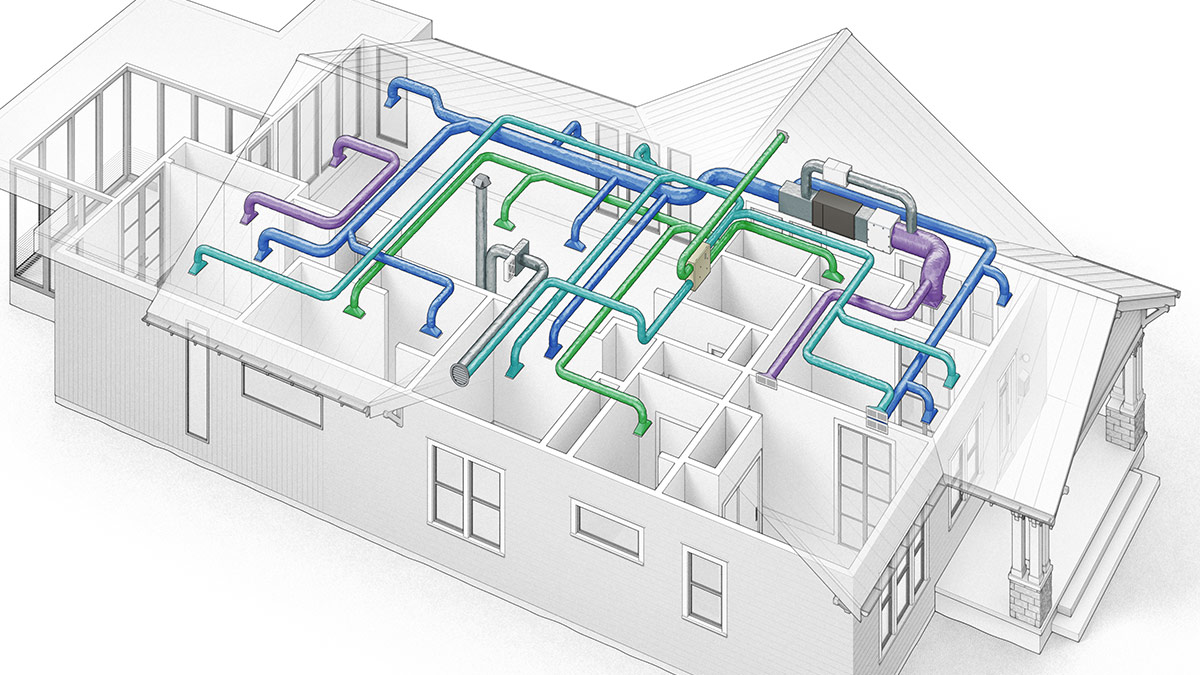
Your Trusted Partner for AC Excellence in South Florida.
Hey there, you energy-savvy aficionados! Let’s talk about something that’s got everyone buzzing—the new federal regulations on HVAC systems for 2023. Are your eyes glazing over already? Stick with me; this is important stuff, especially if you don’t want to get blindsided by your next electricity bill or if you’re considering buying a new air conditioner.



Antimicrobial ductwork can halt the spread of bacteria, fungi, mold, and mildew, preventing these contaminants from entering the air you and your family breathe.
We may advise you to install a UV air purifier to your HVAC system to eliminate mold, pollen, and viruses from the air as it passes through your system.
Duct sealing prevents dust, dirt, allergies, and other contaminants from entering your home's air by repairing faulty ductwork.
To adequately clean and disinfect your indoor air, the EPA and CDC recommend cleaning with a biocide.
First up, why is the Department of Energy (DOE) switching things up? Their newest set of guidelines, which officially kicked in on January 1, 2023, focuses primarily on new AC units and heat pumps. This overhaul aims to establish universal energy efficiency standards, give a big thumbs-up to eco-friendly refrigerants, and introduce new testing methods that are more in tune with real-world conditions. It’s like updating your playlist to 2023 when you’ve been jamming to 1995. Time to move on, right?

You’ve probably seen these acronyms thrown around a lot: SEER, EER, and HSPF. Let’s unravel these like a detective in a mystery novel. SEER, or Seasonal Energy Efficiency Ratio, measures cooling efficiency over an average cooling season. The higher the SEER rating, the less energy you’ll use to keep your home cool. It’s been a guiding star for consumers since the 1970s.
EER (Energy Efficiency Ratio) is like SEER’s cousin but a little less complicated. EER rates an air conditioner’s efficiency at one point in time, usually during peak performance. Think of it as your AC’s performance on the hottest day of the year.
And let’s not forget HSPF (Heating Seasonal Performance Factor), which focuses solely on the efficiency of heat pumps during the winter. It’s been around since the late ’80s and is still relevant for those bracing themselves for cooler months.

So what’s the difference between the original trilogy and these sequel-like SEER2, EER2, and HSPF2? Well, imagine them as the upgraded versions of your favorite superheroes. They offer a more precise idea of energy consumption by incorporating realistic field conditions into their calculations.
Moreover, SEER2-compliant units are waving goodbye to outdated refrigerants like R-22 (Freon) and R-410A (Puron), ushering in an era of more environmentally friendly options. These oldies will still be around for repairs, but they’re not allowed in new installations.
Under these shiny new 2023 regulations, the efficiency requirements have changed:
So, we’re talking about small but significant changes that can amount to big savings in the long run.
You can find your system’s energy efficiency rating on the yellow EnergyGuide label plastered on the side. Failing that, a little detective work on the DOE’s Energy Compliance Certification Database should give you the answers.
Do you need to replace your existing system? Short answer: No. These new regulations only apply to newly manufactured and installed units. But if you’re on the market for an upgrade, opting for a 2023-compliant system will not only be kinder to Mother Earth but also likely lower your energy bills.
Plus, new systems come with all sorts of bells and whistles like smart thermostats and zoning capabilities. So, upgrading is more like getting a new smartphone—you don’t need it, but oh, the features you’ve been missing out on!
To sum it up, the 2023 regulations are more of a “need-to-know” than a “need-to-panic.” Feel free to share your thoughts, questions, or any energy-saving hacks you swear by in the comments. Until next time, keep it cool and carry on saving! 🌿💡
At Cool Nick, we ensure that all our technicians are licensed and trustworthy when providing AC services to our customers.
By submitting, you are giving your consent to be contacted about your request and other information through the use of automated technology. Message frequency may vary. Standard messaging and data rates may apply. To opt-out, simply text STOP to cancel at any time.
Selecting a new AC system can feel like navigating a labyrinth, especially with an overwhelming multitude of options beckoning you. Here’s how we simplify this maze:
Precision Sizing: We measure your home’s architecture with near-surgical precision to find your AC soulmate.
Efficiency Enthusiasts: We align you with an AC system that’s eco-friendly, offering maximum comfort without causing your utility bills to skyrocket.
Respecting the Wallet: Quality and cost-efficiency are not mutually exclusive in our dictionary. We find the harmonious middle-ground that suits your pocket.
The Sound of Silence: Your relaxation shouldn’t be accompanied by a constant mechanical humming. We pick units with acoustics as serene as their cooling prowess.
Personal Preferences: Got allergies? Need to cool only specific spaces? Your individual needs don’t get lost in the fine print with us.
At Cool Nick Air Solutions, we don’t just sell air conditioners; we deliver a seamless transition to a more comfortable, affordable, and sustainable lifestyle. Trust us to bridge your needs and aspirations into a cohesive, satisfying cooling solution
Cool Nick Air Conditioning, Inc.
We firmly believe that the internet should be available and accessible to anyone, and are committed to providing a website that is accessible to the widest possible audience, regardless of circumstance and ability.
To fulfill this, we aim to adhere as strictly as possible to the World Wide Web Consortium’s (W3C) Web Content Accessibility Guidelines 2.1 (WCAG 2.1) at the AA level. These guidelines explain how to make web content accessible to people with a wide array of disabilities. Complying with those guidelines helps us ensure that the website is accessible to all people: blind people, people with motor impairments, visual impairment, cognitive disabilities, and more.
This website utilizes various technologies that are meant to make it as accessible as possible at all times. We utilize an accessibility interface that allows persons with specific disabilities to adjust the website’s UI (user interface) and design it to their personal needs.
Additionally, the website utilizes an AI-based application that runs in the background and optimizes its accessibility level constantly. This application remediates the website’s HTML, adapts Its functionality and behavior for screen-readers used by the blind users, and for keyboard functions used by individuals with motor impairments.
If you’ve found a malfunction or have ideas for improvement, we’ll be happy to hear from you. You can reach out to the website’s operators by using the following email
Our website implements the ARIA attributes (Accessible Rich Internet Applications) technique, alongside various different behavioral changes, to ensure blind users visiting with screen-readers are able to read, comprehend, and enjoy the website’s functions. As soon as a user with a screen-reader enters your site, they immediately receive a prompt to enter the Screen-Reader Profile so they can browse and operate your site effectively. Here’s how our website covers some of the most important screen-reader requirements, alongside console screenshots of code examples:
Screen-reader optimization: we run a background process that learns the website’s components from top to bottom, to ensure ongoing compliance even when updating the website. In this process, we provide screen-readers with meaningful data using the ARIA set of attributes. For example, we provide accurate form labels; descriptions for actionable icons (social media icons, search icons, cart icons, etc.); validation guidance for form inputs; element roles such as buttons, menus, modal dialogues (popups), and others. Additionally, the background process scans all the website’s images and provides an accurate and meaningful image-object-recognition-based description as an ALT (alternate text) tag for images that are not described. It will also extract texts that are embedded within the image, using an OCR (optical character recognition) technology. To turn on screen-reader adjustments at any time, users need only to press the Alt+1 keyboard combination. Screen-reader users also get automatic announcements to turn the Screen-reader mode on as soon as they enter the website.
These adjustments are compatible with all popular screen readers, including JAWS and NVDA.
Keyboard navigation optimization: The background process also adjusts the website’s HTML, and adds various behaviors using JavaScript code to make the website operable by the keyboard. This includes the ability to navigate the website using the Tab and Shift+Tab keys, operate dropdowns with the arrow keys, close them with Esc, trigger buttons and links using the Enter key, navigate between radio and checkbox elements using the arrow keys, and fill them in with the Spacebar or Enter key.Additionally, keyboard users will find quick-navigation and content-skip menus, available at any time by clicking Alt+1, or as the first elements of the site while navigating with the keyboard. The background process also handles triggered popups by moving the keyboard focus towards them as soon as they appear, and not allow the focus drift outside it.
Users can also use shortcuts such as “M” (menus), “H” (headings), “F” (forms), “B” (buttons), and “G” (graphics) to jump to specific elements.
We aim to support the widest array of browsers and assistive technologies as possible, so our users can choose the best fitting tools for them, with as few limitations as possible. Therefore, we have worked very hard to be able to support all major systems that comprise over 95% of the user market share including Google Chrome, Mozilla Firefox, Apple Safari, Opera and Microsoft Edge, JAWS and NVDA (screen readers).
Despite our very best efforts to allow anybody to adjust the website to their needs. There may still be pages or sections that are not fully accessible, are in the process of becoming accessible, or are lacking an adequate technological solution to make them accessible. Still, we are continually improving our accessibility, adding, updating and improving its options and features, and developing and adopting new technologies. All this is meant to reach the optimal level of accessibility, following technological advancements. For any assistance, please reach out to